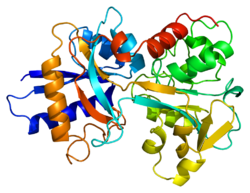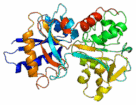In the ongoing battle against cancer, researchers are constantly exploring ways to make treatments more targeted and effective. One promising avenue lies in harnessing and enhancing the body’s own immune responses. Among the most powerful tools in this arsenal are therapeutic antibodies—engineered proteins that can identify and destroy cancer cells. A key mechanism that gives these antibodies their potency is called antibody-dependent cell-mediated cytotoxicity, or ADCC.
ADCC is an essential immune process in which antibodies, once bound to a target cell (such as a tumor cell), signal the immune system to attack. It’s like placing a “bullseye” on harmful cells, directing immune soldiers—especially natural killer (NK) cells—to eliminate them. But not all antibodies are equally effective at triggering this response. That’s where ADCC enhancement technologies come in.
What Is ADCC and Why Does It Matter?
To understand ADCC, it helps to break it down: when an antibody binds to an antigen on the surface of a cancer cell, the tail portion of the antibody, called the Fc region, sticks out. This Fc region acts like a flag, attracting immune cells such as NK cells. Once engaged, these immune cells release toxic substances that destroy the target cell.
In cancer therapies, boosting ADCC means that therapeutic antibodies can more effectively engage immune cells, increasing their ability to eliminate tumors. This is particularly important in the development of monoclonal antibodies, which are designed to target specific cancer markers.
Two Main Strategies to Enhance ADCC
To make antibodies better at this job, scientists focus on two key areas: glycosylation engineering and Fc engineering.
- Antibody Glycosylation Engineering
Glycosylation refers to the process of attaching sugar molecules to proteins—a critical factor in determining how antibodies behave in the body. The type and structure of these sugar chains can greatly affect the antibody’s interaction with immune cells and, by extension, its ADCC activity.
By precisely altering glycosylation patterns, scientists can enhance the immune system’s recognition and response. For example:
Desialylated antibodies: Removing certain sugars can increase the affinity between antibodies and immune cell receptors, strengthening the ADCC response.
High-mannose antibodies: These have a specific sugar profile that can be advantageous in some therapeutic contexts.
Homogeneous glycoforms: Creating uniform glycosylation patterns leads to more predictable and consistent results in treatment.
Fc-silenced antibodies: These are modified to reduce immune activation, useful in scenarios where ADCC is not desired, such as when targeting immune-modulating pathways.
These advanced glyco-engineering techniques are performed in both mammalian and non-mammalian cell systems, depending on the desired outcome.
- Fc Engineering
The Fc region of an antibody plays a vital role in interacting with immune cells. Modifying this region can either enhance or reduce its ability to activate immune responses.
Through Fc engineering, researchers can fine-tune this interaction. This includes:
Increasing the affinity between the Fc region and Fc receptors on NK cells, boosting ADCC.
Adjusting the ability of antibodies to activate the complement system, another immune pathway.
Controlling the half-life of antibodies in the body, which affects how long they stay active in the bloodstream.
Creating non-glycosylated Fc regions for specific research or therapeutic applications.
These modifications are essential not just for increasing potency, but also for improving safety and precision in treatment.
Beyond Engineering: Tools for ADCC-Optimized Antibodies
Enhancing ADCC is more than just molecular tweaking—it also involves developing the right tools and platforms to support research and production. This includes creating stable cell lines for consistent antibody expression, and developing biobetter antibodies, which are improved versions of existing therapies with enhanced efficacy or fewer side effects.
The Future of Cancer Therapy
As cancer treatments become increasingly personalized and immunotherapy gains prominence, ADCC enhancement technologies are expected to play a central role. By fine-tuning how therapeutic antibodies interact with the immune system, researchers are building smarter, more powerful drugs that can selectively and effectively target cancer cells.
One expert in the field notes, “With the right combination of engineering and biological insight, we’re now able to create antibody therapies that are not just reactive, but proactively tailored to work with the immune system in highly strategic ways. It’s an exciting time in oncology research.”
In short, ADCC enhancement is opening up new frontiers in cancer therapy—paving the way for treatments that are not only more effective, but also safer and more targeted than ever before.









